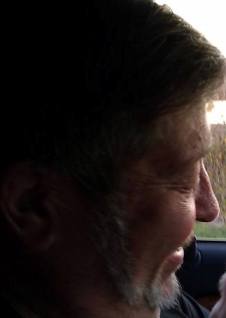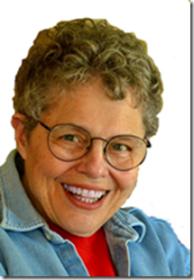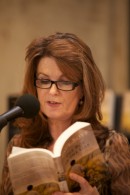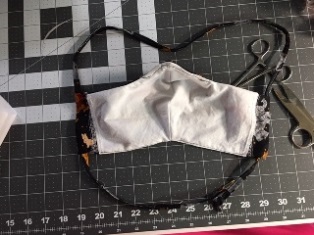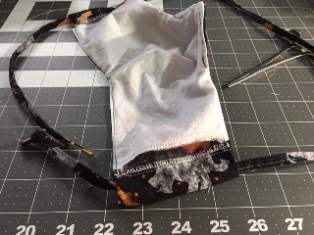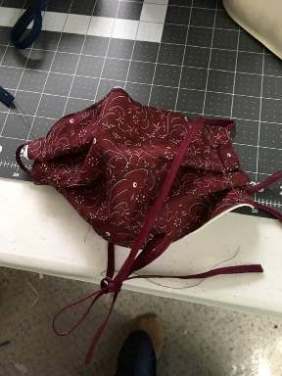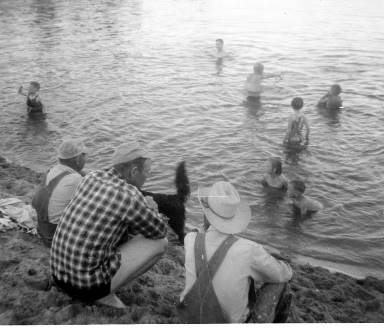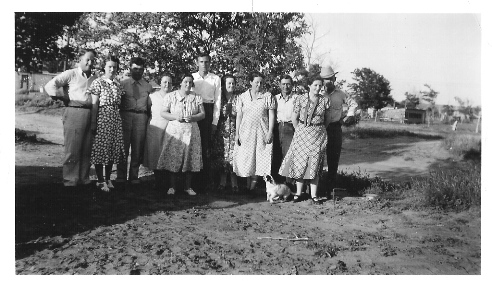
Reflections, Hope, and A Brighter Future
This is a difficult column to write. Our world is
topsy-turvy and it seems only appropriate to document the current events
affecting, literally, billions of people on all continents. Three
events compete for your author’s attention: The world is dealing with a
pandemic. The first true pandemic in just over 100 years. A century ago,
the Spanish flu took millions of lives. Although called the 1918
Spanish Flu pandemic, the ravages of that viral outbreak lasted three
years, the last deaths attributed to it taking place in 1921.
And this is the year of the United States
Federal Census. Taken every decade since 1790, it is a keynote event for
all genealogists. It is hoped every person in the country will, indeed,
take the time to respond to the questionnaire. The results of the census
will not be released for public review for 70 years. Thus, this year
also marks the release of the 1950 US Federal Census – the first year
many of us will appear in that historic document.
Additionally, this month Christians the world
over will celebrate Easter. Easter Sunday this year occurs 12 April
2020. The celebration coincides with the vernal equinox.
The Coronavirus Pandemic:
This is a scary time. The world is held hostage, it
seems, by a microscopic virus which has been named COVID-19. Countries
all around the globe have enacted restrictions of varying degrees upon
their own citizenry and upon foreign travelers in a bid to stop the
transmission of this dread disease.
From time to time, throughout history, viral epidemics
have erupted. The virus is a rather unique biologic, possessing the
ability to mutate in response to its environment and its host. Each
mutation is designed to permit the viral invader to take over the host’s
body, its very basic cellular function, in order to transmogrify the
host’s cells to become … the virus. This process, it appears, has been
part and parcel of the Earth’s experience since the very beginning of
time. Each time a virus is successfully fought off by a human host, the
process of battle imparts a “memory” – antibodies developed in response
to the viral invasion that defeated the enemy. Astonishingly, the human
species has the ability – through its genetic structure – to develop
what scientists refer to as “herd immunity” to each specific type of
viral agent. You may be most familiar with this through the annual flu
vaccination process. Each year, medical experts attempt to prognosticate
– to prophesize as to the variation of flu that will be prevalent in
the coming season. Vaccinations are prepared and offered to every person
in the hope of preventing the agony and potential for death faced by
flu victims. These vaccinations utilize the antibodies harvested from
experimental subjects that successfully fought off that strain of
influenza, among other things.
What makes the coronavirus so deadly is that the
coronavirus is not native to human hosts. The various types of
coronavirus infections are ones that have for millenia infected other
creatures: birds, swine, ovine, canine, feline, and reptilian creatures.
Therefore, no “herd immunity” has been developed by humankind. The
virus, somehow, modifies and becomes able to infect a human host. Once
in that single human host, the virus “learns” to mutate and transmit
from human host to human victim. When that process begins, scientists
race to find a way to stop the virus.
Many humans are able to develop their own immune
response to viral infections. They experience the typical series of
symptoms, from aches and pains, muscle soreness, cough and sneeze
reactions, volumes of mucosal reaction, often even vomiting and
diarrhea. The one marked and constant symptom is fever, as the human
body attempts to “burn” out the viral invader. Although fever is most
uncomfortable and millions of dollars are spent on NSAIDS (aspirin,
ibuprofen, and the like) to reduce the fever, that fever is actually the
best natural defense our bodies can provide. Yes. Fever can kill, but
if permitted to go untreated until the thermometer reflects a
temperature higher than … (doctors will advise, but often 102 or 103
degrees is when fever reducing medications are prescribed), the body is
working to fight that disease!
It should be noted that one of the ways viral invaders
mutate is when your doctor prescribes medication for an illness and you
fail to take ALL the prescribed dosages. Often, we feel better and don’t
like the process of taking medications, so we stop taking the meds.
MISTAKE! This permits the wily, evil little buggers to figure out a way
to SURVIVE that particular medication. Next time, next year, next
person, the virus is now immune to that cure. Another cure bites the
dust.
COVID-19 has been traced to what is believed to have
been Host One who visited a live animal market in Wuhan, China. There,
live creatures are sold for food sources. Somehow, one of those
creatures was handled, slaughtered, or prepared for a meal in a manner
that permitted the infected host’s viral invader to attach itself to the
human. Once within that human host, it rapidly mutated and within a
week, it is believed, had developed the ability to transmit from human
host to human victim. The symptoms were, as reported, marked by rapid
onset and – for far too many – rapid death. The cause of the fatalities
appears to be a very quick acting pneumonia where the mucosa in the body
becomes so thickened and voluminous the patient is asphyxiated. This
location was particularly dangerous, as it was within close proximity to
an international airport.
China has a history of purposefully obscuring news of
negative import. In spite of historical evidence that early
acknowledgment and broad publication of such horrific illnesses helps to
contain the outbreak, the negative impact to the international repute
or economic impact has contributed to the tendency to cover up such
outbreaks. The world first learned in January of the COVID-19 outbreak
in China that occurred in December of 2019. However, there is emerging
rumor that the earliest case was discovered in November. Whether or not
that is true, is of little use now – other than as an educational tool
for future response.
Your author has two very dear connections to China:
one, another PencilStubs columnist, Thomas F. O’Neill, author of
Introspective. (Thomas gave a firsthand account of his personal
experiences with China’s reaction to the outbreak in last month’s
issue.) The second is actually family: our cousin, Gary Bullard, who
traveled to China years ago in connection with his career in the
petroleum industry, fell in love with the country and, more importantly,
with the woman who would become his wife, and has made China his home
for many years. For this reason, my attention was captured by the early
news. Contact was made to both Gary and Thomas, queries as to the
distance from Wuhan to their homes, whether or not their communities
seemed to be affected, and prayers for their safety. From time to time,
news of their personal experiences have been shared through social
media. (What an incredible tool we have at our fingertips!)
At any rate, America was made aware of the outbreak of
this new and deadly strain of virus as early as January 2020. Little was
done in this country, however, to prepare for what has become a
monstrous death-dealing pandemic. In the early days of the COVID-19
outbreak, China, of course, was the epicenter for infections and deaths.
Soon, Italy became the country with the greatest number of infections
and, sadly, deaths. Before long, countries around the world had their
own outbreaks of the virus. Medical and scientific experts the world
over have been working day and night to identify a vaccination,
treatment, or – God willing! – a cure. One of the greatest trials has
been the development of the most basic tool in the armament: a TEST that
works. For without the data to identify known infections, recoveries,
treatments that do or do not work, and causes of the many deaths
attributed to COVID-19, no hope exists for its defeat. Sadly, today the
greatest number of cases reported worldwide is in our own country, here
in the United States.
America’s response has been a mixed bag. No
over-arching governmental decrees or use, thus far, of the extensive
factories to modify their production efforts to the most basic
protections for our healthcare workers: PPE – Personal Protective
Equipment: masks with breathing apparatus made of materials with the
ability to block out the microscopic coronavirus cell; standard gloves
and gowns and foot and hair coverings, even! The country has relied upon
a healthcare system that has an economic oversight: too few hospitals,
too few hospital beds, far too few ICU units and beds for the onslaught
of this pandemic. Even the healthcare professionals are facing daily
stresses with double and triple shifts, no contact with their own
families in many cases, and far too many falling victim to the
infection, themselves.
Further, each state’s response has varied. For
instance, the pandemic was announced coincident with annual Spring break
for colleges. Florida’s governor failed to close the beaches. In spite
of news announcements, droves of college youth appeared on the Florida
sands. Those youngsters returned to their dorms, utilizing public
transportation: airplanes, buses, trains, or private cars where many
stayed in hotels or motels on the trip home. It has been shown that
COVID-19 in a host body is asymptomatic for TWO WEEKS. So, an
unsuspecting host can be spreading the virus to everyone with whom they
come in contact for that incubation period. Some of those infected may
die. Now Florida’s numbers have soared. In Louisiana, the governor
(mindful of the enormous economic impact) failed to call off Mardi Gras
celebrations. The number of cases are soaring in that state and among
Mardi Gras attendees now in their home states, spreading the disease.
Other states’ governors have been egregiously ignorant of the need for
precautions. Notably, Lt. Gov. Dan Patrick of Texas even called for
seniors to be willing to sacrifice their lives so that the youth could
“get back to work.”
In New York, where a core outbreak at a nursing home
seems to have been the source of the initial cases, the numbers are
frightening. Governor Andrew Cuomo has been giving daily Coronavirus
updates on air. The state has rushed to utilize a Navy hospital ship
docked in Manhattan to isolate COVID-19 patients. News less than an hour
old shows New York CITY alone has over 38,000 cases and has reported
914 dead. In one six-hour period, the City was experiencing a death
every 2.9 minutes. Governor Cuomo is desperately attempting to locate
the PPE essential to keeping the state’s healthcare professionals alive
and working. Some nurses have resorted to cutting up plastic trash bags
to fashion make-shift “gowns” and “footwear.” Christian Siriano, a top
fashion designer, has directed his team to the production of life-saving
masks. Central Park has been closed off from the public; a temporary
hospital tent facility erected. Times Square is empty. Broadway is
closed. No restaurants are open for seating; only take-out and delivery.
The evidence collected worldwide seems to reflect a
frightening ease of transmission through droplets spread by sneezing or
coughing. The cells of COVID-19 have a “shelf life” of extensive
duration: up to 17 days on hard surfaces of a cruise ship whose
passengers became infected. It appears to last for a shorter period of
time on cloth, cardboard and the like. Those most direly affected are,
of course, the elderly or immune-suppressed, or with other health issues
such as diabetes, lupus, heart ailments and the like. There have been,
however, deaths among infants and the young. A number of celebrity
infections and even deaths have attracted attention through the news
media recently.
Our home state of Oklahoma, like so many other states,
has called for personal quarantine, restricted travel outside our homes
for any but essential needs (groceries, medications, doctor’s visits).
Schools have been closed for the past two weeks; now, the directive is
that school will not resume until the Fall. People are working from
their homes when remote work is possible. Restaurants, bars, nightclubs
are permitted to operate only delivery or pick up distribution. Casinos
have been closed statewide. No assembly of persons larger than 10 is
permitted. Churches have resorted to live video services when possible.
Videos are found online offering tutorials in hand
washing, how to protect food stuffs, how to sanitize the counter where
groceries will be unpacked and stored, how to maintain a personal
separation of 6 foot from others, how to cough into your elbow, the need
to leave shoes outside (walking through those droplets), shower and
launder clothes upon return, and other helpful precautions.
Personally, our household consists of four persons all
of whom are immune suppressed by a variety of health issues and age
concerns. We have been practicing self-quarantine for weeks now. Our
only contact to the outside world takes place when our Chief Forager
(hubby) emerges from our cave to grocery shop. He wears a mask, showers
before and after, groceries are subjected to special care to remove any
contamination before going into the fridge or pantry, fruits are washed …
still I worry. My last trip out of the house was an essential trip to
my anti coagulation clinic. We both wore masks (bought last year when I
had Type A flu and pneumonia) for the visit. No valet parking was
available. Rod wiped down the wheelchair handles before transporting me
inside. The staff had a table set up with nurses to take temps with
sterile wipes there to immediately handle the thermometer (forehead
touch technology). Questions: have you been out of the country in the
past 14 days? Have you had contact with anyone who has been out of the
country over the past 14 days? Have you had any symptoms of the flu?
Fever, coughs, sneezes, aches, pains, vomiting or diarrhea? To add
“interest” to the visit, a couple (homeless? It appeared so) had called
the police to report a theft of her purse – as they sat on the bench
outside the hospital complex. They were tracking the GPS on her
cellphone and there were Hospital Security guards and a number of police
present. Goodness.
It is sincerely hoped that by next month’s issue, this
pandemic has been contained, cured, eradicated! The prior coronavirus
scares were MERS and SARS and those were quickly dealt with. In the
meantime, life seems other-worldly: schools, restaurants, workplaces,
stores, casinos closed. Travel restrictions in place all over the world
in a helter-skelter fashion, as different municipalities, states, or
countries’ leaders react in different ways. Fear dominant in many, but
countered by those who have chosen to take the “this is a hoax”
attitude. Some really far-out-there theories, even suggesting this is
the work of the Illuminati while they engage 5G cell technology to (1)
spy on all communities; or (2) spread biologics… Oh, my.
2020 United States Federal Census:
This once-a-decade event should be the central theme
for a column dedicated to genealogy, family history, and research. But,
in this year of the pandemic, the Census certainly takes a back seat in
the news. Our Census this year is to be completed online, with
households receiving a mailing that contains an identifying code to be
input once the online site is accessed. This ensures each household is
enumerated. There will be reminders and – if no response is received – a
team of door-to-door enumeration specialists will be dispatched.
Libraries (if ever allowed to open again!) will have computer access for
those who have none at home.
The questions are very simplistic: names (first,
middle, and last), ages, Race (offering a pre-set list of possibilities
to be checked, including both White Hispanic and White, not Hispanic),
and then Origin. In hindsight, having responded White, English for those
two questions, I now wonder if I should have reported origin based on
country of BIRTH, not ancestor’s derivation. No questions about value of
real property, personal property, occupation, military record … no
personal insights to tickle the imagination of future genealogists who,
70 years hence, get to review the Census data. After the big stir over
really unnecessary and politically-motivated potential inquiries, this
was both a relief and a disappointment. Relief that the simple queries
may result in a greater response. Disappointment that future historians
will have little personal insight into their families’ snapshot of their
daily lives.
PLEASE! DO respond to the Census. It is required, but
so many ignore the enumeration. For your kids, grandkids, great
grandkids – even later generations, your response may provide the
critical brick-buster they need to identify a “lost” (to them) ancestor.
Take your place in history. Fill in your household Census.
Easter 2020 – 12 April:
In the midst of this horrific pandemic, the bright
light for Christians the world over is the celebration of Jesus Christ’s
victory over death. Yes, there will be colored eggs and bunnies,
baskets of fruits and candies SURELY (?) even if those traditional
celebrations must be limited to our backyard or even, within the
apartment or home.
For all of us who are devout believers, this is the
penultimate celebration of our faith. Spring, itself, is a reminder of
life after death as trees – long dormant over the winter months – bring
forth fresh green leaves and, for many varieties, a floral tribute that
brightens our landscape. The emerging bulbs of crocus, hyacinth,
daylilies, tulips, jonquils – in their riot of colors paint our world
with the glories of Nature. Gone are the dry brown fields of last year’s
grasses, awakened to the splendor of new life – new birth – new fresh
flowers and the warm breezes that chase away the cold and gloom.
HE LIVES! And, therefore, we have the promise of
victory over death. May this Easter bring news of a cure for this latest
assault on mankind. Amen, so may it be.
In the meantime, our household lifts prayers daily –
for the good health of our family, near and extended, our friends around
the world, our nation and our world.
Click on author's byline for bio and list of other works published by Pencil Stubs Online.







